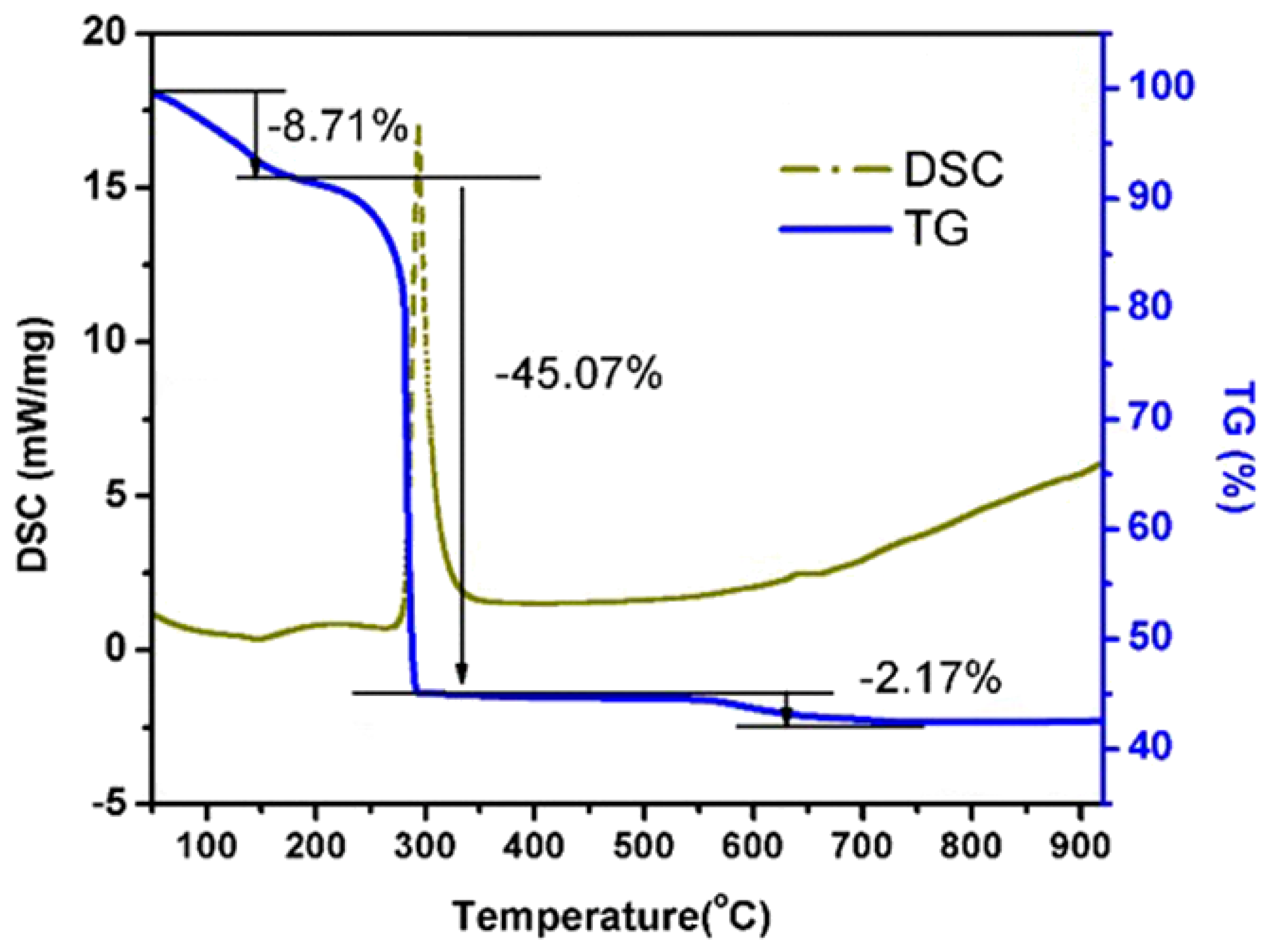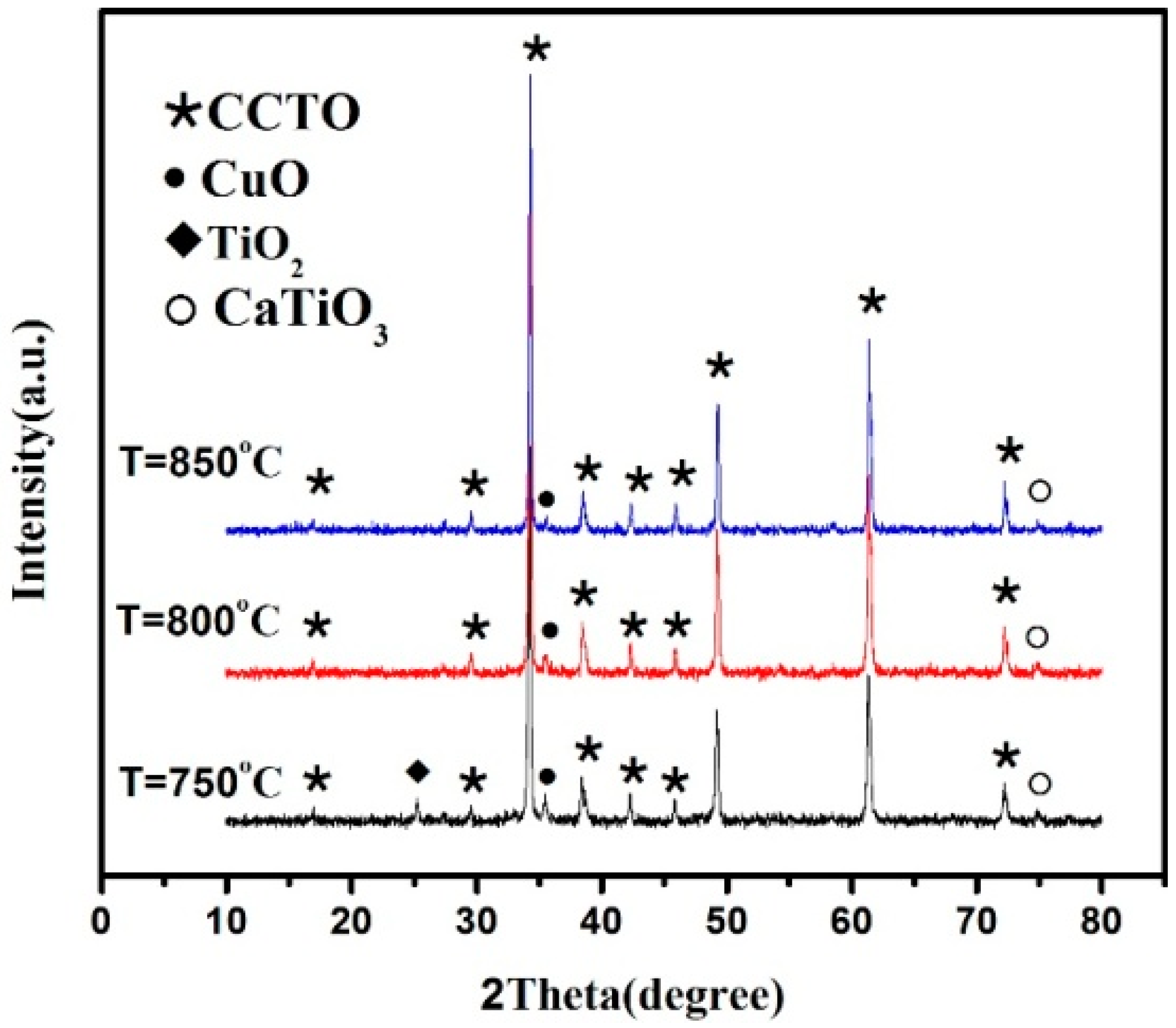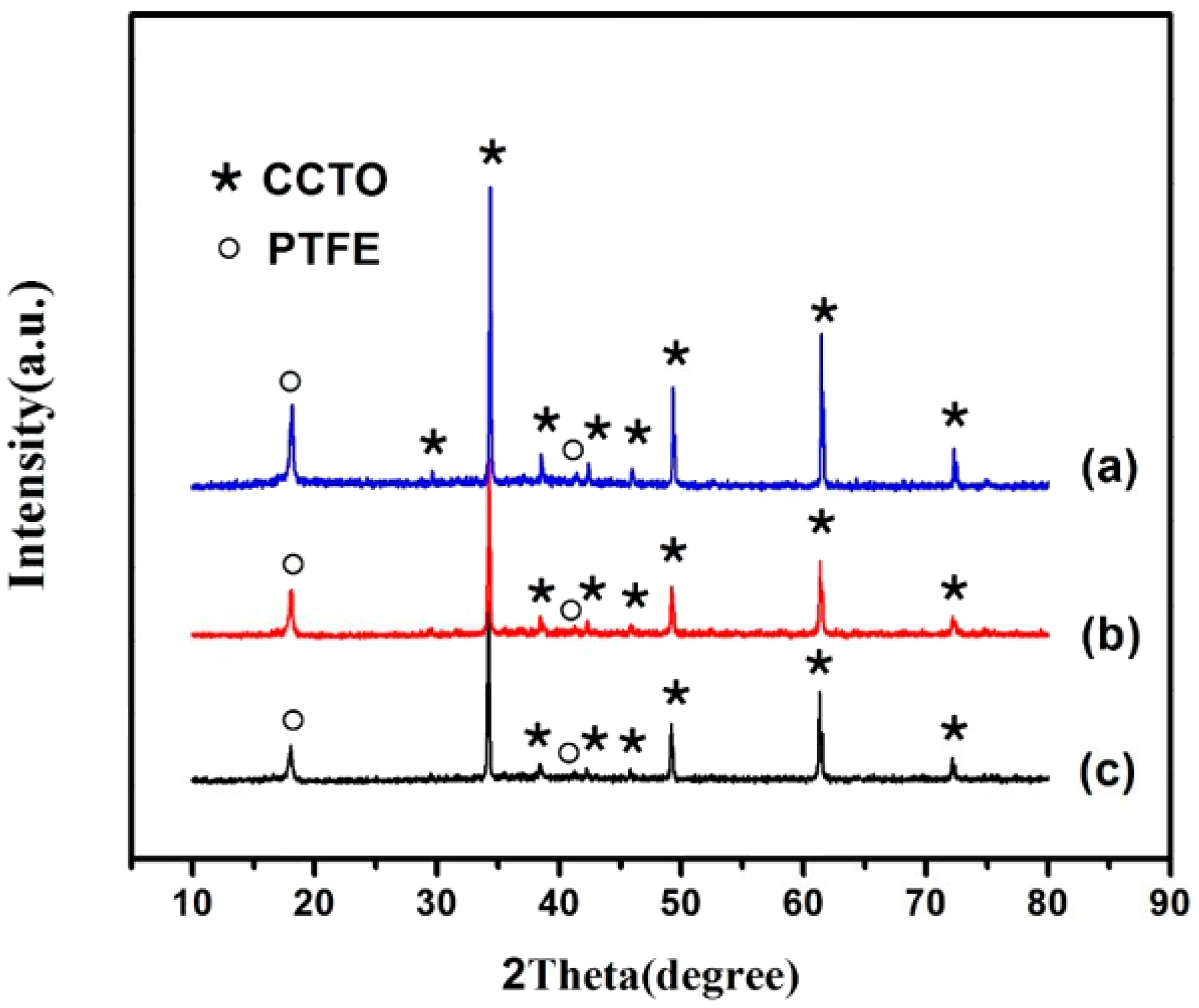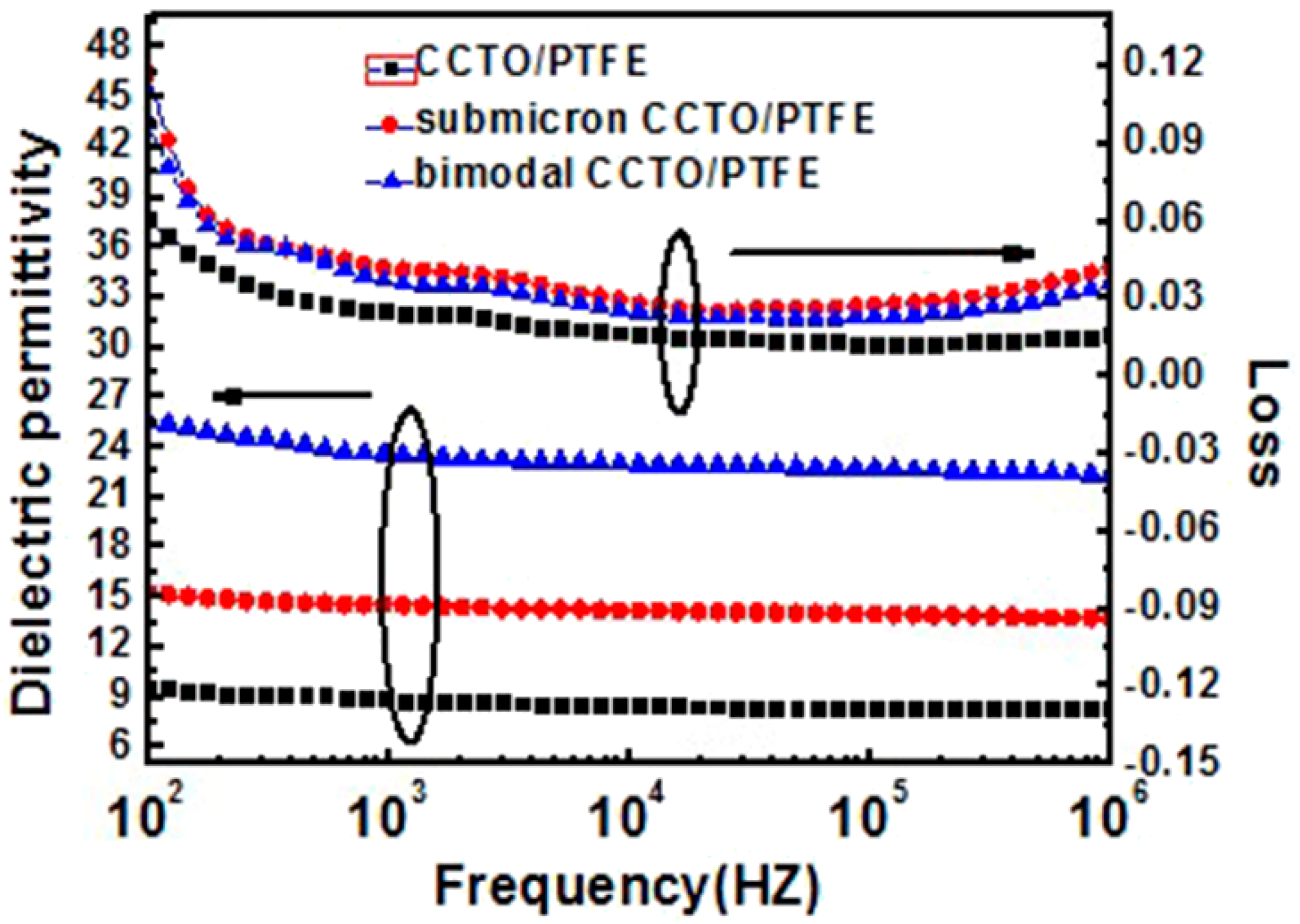Microstructure and Dielectric Properties of PTFE-Based Composites Filled by Micron/Submicron-Blended CCTO
Abstract
:1. Introduction
2. Experimental Section
3. Results and Discussion
4. Conclusions
Acknowledgments
Author Contributions
Conflicts of Interest
References
- Youngs, I.J.; Stevens, G.C.; Voughan, A.S. Trends in dielectrics research: An international review from 1980 to 2004. J. Phys. D Appl. Phys. 2006, 39, 1267. [Google Scholar] [CrossRef]
- Murali, K.P.; Rajesh, S.; Prakash, O.; Kulkarni, A.R.; Ratheesh, R. Comparison of alumina and magnesia filled PTFE composites for microwave substrate applications. Mater. Chem. Phys. 2009, 113, 290. [Google Scholar] [CrossRef]
- Liang, F.; Zhang, L.; Lu, W.Z.; Wan, Q.X.; Fan, G.F. Dielectric performance of polymer-based composites containing core-shell Ag@TiO2 nanoparticle fillers. Appl. Phys. Lett. 2016, 108, 072902. [Google Scholar] [CrossRef]
- Prakash, B.S.; Varma, K.B.R. Dielectric behavior of CCTO/epoxy and Al-CCTO/epoxy composites. Compos. Sci. Technol. 2007, 67, 2363–2368. [Google Scholar] [CrossRef]
- Dang, Z.M.; Yuan, J.K.; Zha, J.W.; Zhou, T.; Li, S.T.; Hu, G.H. Fundamentals, processes and applications of high-permittivity polymer—Matrix composites. Prog. Mater. Sci. 2012, 57, 660. [Google Scholar] [CrossRef]
- Dang, Z.M.; Yuan, J.K.; Yao, S.H.; Liao, R.J. Flexible nanodielectric materials with high permittivity for power energy storage. Adv. Mater. 2013, 25, 6334–6365. [Google Scholar] [CrossRef] [PubMed]
- Sebastian, M.T.; Jantunen, H. Polymer-ceramic composites of 0-3 connectivity for circuits in electronics: A review. Int. J. Appl. Ceram. Technol. 2010, 7, 415–434. [Google Scholar] [CrossRef]
- Subodh, G.; Deepu, V.; Mohanan, P.; Sebastian, M.T. Dielectric response of high permittivity polymer ceramic composite with low loss tangent. Appl. Phys. Lett. 2009, 95, 062903. [Google Scholar] [CrossRef]
- Singh, P.; Borkar, H.; Singh, B.P.; Singh, V.N.; Kumar, A. Ferroelectric polymer-ceramic composite thick films for energy storage applications. AIP Adv. 2014, 4, 087117. [Google Scholar] [CrossRef]
- Pela’iz-Barranco, A. Dielectric relaxation and electrical conductivity in ferroelectric ceramic/polymer composites around the glass transition. Appl. Phys. Lett. 2012, 100, 212903. [Google Scholar] [CrossRef]
- Lee, H.J.; Zhang, S.J.; Meyer, R.J., Jr.; Sherlock, N.P.; Shrout, T.R. Characterization of piezoelectric ceramics and 1-3 composites for high power transducers. Appl. Phys. Lett. 2012, 101, 032902. [Google Scholar] [CrossRef] [PubMed]
- Lin, Y.-H.; Cai, J.; Li, M.; Nan, C.-W.; He, J. Grain boundary behavior in varistor-capacitor TiO2-rich CaCu3Ti4O12 ceramics. J. Appl. Phys. 2008, 103, 74111. [Google Scholar] [CrossRef]
- Li, W.; Schwartz, R.W. Ac conductivity relaxation processes in CaCu3Ti4O12 ceramics: Grain boundary and domain boundary effects. Appl. Phys. Lett. 2006, 89, 242906. [Google Scholar] [CrossRef]
- Amaral, F.; Rubinger, C.P.L.; Henry, F.; Costa, L.C.; Valente, M.A.; Barros-Timmons, A. Dielectric properties of polystyrene-CCTO composite. J. Non-Cryst. Solids 2008, 354, 5321–5322. [Google Scholar] [CrossRef]
- Subramanian, M.A.; Li, D.; Duan, N.; Reisner, B.A.; Sleight, A.W. High dielectric constant in ACu3Ti4O12 and ACu3Ti3FeO12 phases. J. Solid State Chem. 2000, 151, 323–325. [Google Scholar] [CrossRef]
- Homes, C.C.; Vogt, T.; Shapiro, S.M. Optical Response of High-Dielectric-Constant Perovskite-Related Oxide. Science 2001, 293, 673. [Google Scholar] [CrossRef] [PubMed]
- Liu, P.; Lai, Y.M.; Zeng, Y.M.; Wu, S.; Huang, Z.H.; Han, J. Influence of sintering conditions on microstructure and electrical properties of CaCu3Ti4O12 (CCTO) ceramics. J. Alloys Compd. 2015, 650, 59–64. [Google Scholar] [CrossRef]
- De Almeida-Didry, S.; Autret, C.; Lucas, A.; Honstettre, C.; Pacreau, F.; Gervais, F. Leading role of grain boundaries in colossal permittivity of doped and undoped CCTO. J. Eur. Ceram. Soc. 2014, 34, 3649–3654. [Google Scholar] [CrossRef]
- Tang, H.; Zhou, Z.; Bowland, C.C.; Sodano, H.A. Synthesis of calcium copper titanate (CaCu3Ti4O12) nanowires with insulating SiO2 barrier for low loss high dielectric constant nanocomposites. Nano Energy 2015, 17, 302–307. [Google Scholar] [CrossRef]
- Yang, Y.; Zhu, B.P.; Lu, Z.H.; Wang, Z.Y.; Fei, C.L.; Yin, D.; Xiong, R.; Shi, J.; Chi, Q.G.; Lei, Q.Q. Polyimide/nanosized CaCu3Ti4O12 functional hybrid films with high dielectric permittivity. Appl. Phys. Lett. 2013, 102, 042904. [Google Scholar] [CrossRef]
- Yang, Y.; Sun, H.L.; Yin, D.; Lu, Z.H.; Wei, J.H.; Xiong, R.; Shi, J.; Wang, Z.Y.; Liu, Z.Y.; Lei, Q.Q. High performance of polyimide/CaCu3Ti4O12@Ag hybrid films with enhanced dielectric permittivity and low dielectric loss. J. Mater. Chem. A 2015, 3, 4916. [Google Scholar] [CrossRef]
- Gao, L.; Wang, X.; Chen, Y.; Chi, Q.G.; Lei, Q.Q. Ni-coated CaCu3Ti4O12/low density polyethylene composite material with ultra-high dielectric permittivity. AIP Adv. 2015, 5, 087183. [Google Scholar] [CrossRef]
- Arbatti, M.; Shan, X.B.; Cheng, Z.Y. Ceramic–Polymer Composites with High Dielectric Constant. Adv. Mater. 2007, 19, 1369–1372. [Google Scholar] [CrossRef]
- Dang, Z.M.; Zhou, T.; Yao, S.H.; Yuan, J.K.; Zha, J.W.; Song, H.T. Advanced Calcium Copper Titanate polyimide. Adv. Mater. 2009, 21, 2077–2082. [Google Scholar] [CrossRef]
- Chi, Q.G.; Sun, J.; Zhang, C.H.; Liu, G.; Lin, J.Q.; Wang, Y.N.; Wang, X.; Lei, Q.Q. Enhanced dielectric performance of amorphous calcium copper titanate/polyimide hybrid film. J. Mater. Chem. C 2014, 2, 172–177. [Google Scholar] [CrossRef]
- Yang, W.H.; Yu, S.H.; Sun, R.; Du, R.X. Nano- and microsize effect of CCTO fillers on the dielectric behavior of CCTO/PVDF composites. Acta Mater. 2011, 59, 5593–5602. [Google Scholar] [CrossRef]
- Zha, J.W.; Zhu, Y.H.; Li, W.K.; Bai, J.B.; Dang, Z.M. Low dielectric permittivity and high thermal conductivity silicone rubber composites with micro-nano-sized particles. Appl. Phys. Lett. 2012, 101, 062905. [Google Scholar] [CrossRef]
- Marchin, L.; Guillemet-Fritsch, S.; Durand, B. Soft chemistry synthesis of the perovskite CaCu3Ti4O12. Prog. Solid State Chem. 2007, 36, 151–155. [Google Scholar] [CrossRef]
- Ehrhardt, C.; Fettkenhauer, C.; Glenneberg, J.; Münchgesang, W.; Leipner, H.S.; Diestelhorst, M. A solution-based approach to composite dielectric films of surface functionalized CaCu3Ti4O12 and P(VDF-HFP). J. Mater. Chem. A 2014, 2, 2266. [Google Scholar] [CrossRef]
- Barbier, B.; Combettes, C.; Barbiera, B.; Guillemet-Fritschb, S.; Chartierc, T.; Rossignolc, F.; Rumeaud, A.; Lebeyd, T.; Dutardea, E. CaCu3Ti4O12 ceramics from co-precipitation method: Dielectric properties of pellets and thick films. J. Eur. Ceram. Soc. 2009, 29, 731. [Google Scholar] [CrossRef]
- Liu, J.; Gan, D.; Hu, C.; Kiene, M.; Ho, P.S.; Volksen, W.; Miller, R.D. Porosity effect on the dielectric constant and thermomechanical properties of organosilicate films. Appl. Phys. Lett. 2002, 81, 4180–4182. [Google Scholar] [CrossRef]
- Lee, J.; Koh, J. Grain size effects on the dielectric properties of CaCu3Ti4O12 ceramics for supercapacitor applications. Ceram. Int. 2015, 41, 10442–10447. [Google Scholar] [CrossRef]
- Yu, V.; Dang, Z.; Zha, J. Micro-Nanosize Cofilled High Dielectric Permittivity Composites. In Proceedings of the IEEE 9th International Conference on the Properties and Applications of Dielectric Materials, Harbin, China, 19–23 July 2009; pp. 769–772. [Google Scholar]







© 2017 by the authors. Licensee MDPI, Basel, Switzerland. This article is an open access article distributed under the terms and conditions of the Creative Commons Attribution (CC BY) license (http://creativecommons.org/licenses/by/4.0/).
Share and Cite
Xie, C.; Liang, F.; Ma, M.; Chen, X.; Lu, W.; Jia, Y. Microstructure and Dielectric Properties of PTFE-Based Composites Filled by Micron/Submicron-Blended CCTO. Crystals 2017, 7, 126. https://doi.org/10.3390/cryst7050126
Xie C, Liang F, Ma M, Chen X, Lu W, Jia Y. Microstructure and Dielectric Properties of PTFE-Based Composites Filled by Micron/Submicron-Blended CCTO. Crystals. 2017; 7(5):126. https://doi.org/10.3390/cryst7050126
Chicago/Turabian StyleXie, Chao, Fei Liang, Min Ma, Xizi Chen, Wenzhong Lu, and Yunxiang Jia. 2017. "Microstructure and Dielectric Properties of PTFE-Based Composites Filled by Micron/Submicron-Blended CCTO" Crystals 7, no. 5: 126. https://doi.org/10.3390/cryst7050126




